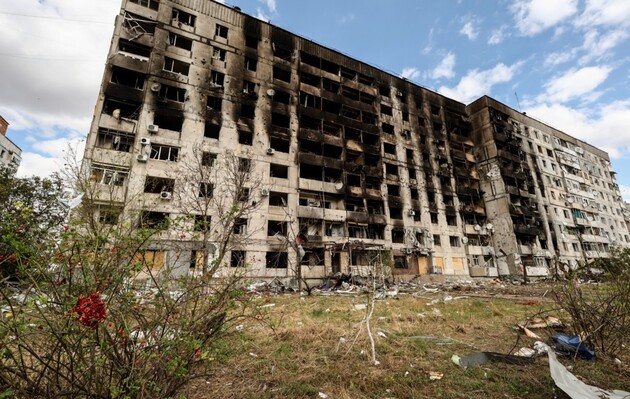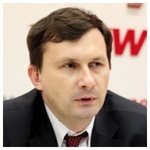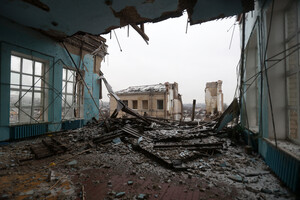Three Steps to Revive Ukraine's Regions

In the times of economic recovery, the need for consolidation and optimal involvement of the resource capacity of the regions becomes increasingly acute. At the same time, new factors that will shape the spatial landscape on which the post-war reconstruction of the country will unfold must be taken into account. Unfortunately, so far the development of relevant visions is taking place extremely slowly in Ukraine. The draft of the new version of the State Regional Development Strategy until 2027, which is currently being discussed, does not contain any changes in this direction.
Undoubtedly, hardly anyone still entertains false beliefs about the possibility of returning to the territorial structure of the economy that existed before the full-scale Russian invasion. Moreover, this is the matter of not only the large-scale destruction of economic potential, which really accelerated the drastic structural changes of the national economy, but also of the fact that after the war ends, Ukraine will emerge as a largely new country with a different population structure, resource potential, structure of international economic ties, new international status and external obligations. However, another illusion may be persistent – the one regarding the possibility of arbitrarily building the structure of the new country's economy from scratch. Accordingly, from there unjustified expectations and hopes may arise.
It is incumbent upon experts and politicians to build a clear understanding of the real factors on which the post-war territorial landscape of Ukraine's economy will depend and form, on the basis, appropriate policies for implementing the potential of the regions in accordance with the strategic goals that will be faced by the post-war country.
First of all, it should be taken into account that the full-scale war has given rise to new limiting factors that affect the sectoral structure of regional economies. Among these factors there are:
- The destruction of assets as a result of hostilities, occupation or enemy shelling. The scale of these destructions will, in fact, determine the cost, duration and, in some cases, the economic feasibility of restoring relevant enterprises. In the same context, military pollution has an effect - remnants of hostilities, mining, the consequences of destruction, due to which the economic specialization of territories (especially in agricultural production) can change for a long time to come.
- The condition of transport, communication and social infrastructure, the destruction of which can significantly limit opportunities for economic activity. Consequently, it will be more difficult to attract local resources in these territories (both natural and human), so their outflow to more prosperous regions will prevail.
- The level of relative security in relation to war risks due to proximity to the combat zone during the war, proximity to the border with the aggressor country in the post-war period. Higher risks will “wash out” production even from resource-abundant areas.
- The quality and stability of energy supply, which is especially important for energy-intensive industries, in particular in ferrous and non-ferrous metallurgy. The destruction of energy and mineral extraction capacities, as well as Ukraine's obligations within the framework of the green transition, significantly increase the total cost of restoring basic industries. Therefore, the restoration itself should be based on the most efficient technologies.
- The complete closure of the northern and eastern borders for economic communications will lead to the final status of a number of regions as dead ends. Even with robust postwar security guarantees, additional steps will be needed to prevent these regions from sinking into depression.
- Lack of personnel on the labor market due to significant population movements (departure of IDPs, forced departure of some people abroad), mobilization of economically active men, physical losses, etc. Accordingly, the classical tools of economic stimulation will not be effective without the means of socio-demographic policy, and this policy has a completely different nature and goals, far from classical economic rationality.
In a number of regions, these factors can significantly slow down or block the effect of economic instruments designed to stimulate the recovery of economic growth and structural changes, due to which these instruments will only worsen territorial disparities.
The goals of security and stability will have a very significant impact on the sectoral structure of the regional economy. They will encourage the transfer of strategically important productions from the riskiest areas or their duplication in safer regions, the deconcentration of productions, the creation of the country's own value chains, above all, in the defense industry. Obviously, both public investments and transnational capital will work in these directions. The rationalization of the process could be facilitated by the National Sustainability Strategy with a strong scientifically based regional dimension.
Territorially balanced recovery can be accelerated if we take into account the new opportunities in regions and communities:
- the increase in the flexibility of the labor market and the emergence of new occupational and qualification offers in the regions as a result of the influx of IDPs, as well as additional motivation for the retraining of people who do not see prospects of returning to their previous place of work, expand the possibilities of sectoral diversification of the economies of the regions;
- as a result of the relocation of enterprises, new cluster connections are formed, the sectoral specialization of territories changes and is supplemented;
- the opportunities for international contacts are expanding thanks to simplified access to European markets and, in the future, the involvement of Ukraine in European programs and EU pre-accession funds;
- a fairly strong new demand is emerging for goods and services to cater for the needs of defense, stability, reconstruction and solving humanitarian issues, and for goods and services of everyday use to meet the needs of the communities that are significant recipients of IDPs;
- thanks to the growth of civic activity, there are opportunities for a wider use of the potential of civil society, including local self-government, to stimulate regional and local development.
In order to overcome wartime limiting factors and actively put into practice the opportunities of regional economic recovery, three main steps should be integrated into the strategic recovery documents. Thanks to the qualitative renewal of the conditions for the realization of the resource potential of the regions, they could lay the foundations of structural changes that will create synergy in the recovery of Ukrainian regions.
Firstly, when using international support, it is necessary to draw as much as possible on the opportunities of the latest technologies. It is a question of reinventing the use of the available resource potential — from unique, such as deposits of rare earth metals (the demand for which is growing rapidly because of the spread of electric transport), to traditional, such as agricultural resources (bioenergy, materials from plant-based raw materials, etc.) or even accumulated industrial and household waste. This can significantly change the picture of drivers of regional economic development. In addition, the cutting-edge technological possibilities of the autonomy of life support (electricity, heat, even water supply) together with the development of telecommunications are changing the basic factors of territorialization. In particular, the attachment to industrial centers is weakening, the need for urban agglomerations is eroding, dependence on economies of scale in processing is decreasing (smaller enterprises are becoming profitable), and the problem of staff shortages is easing thanks to the introduction of unmanned technologies. It is easier to create conditions for the life of the employees involved.
Secondly, it is necessary to implement the provisions of the State Regional Development Strategy on the application of a comprehensive territorial approach — through the practical development and implementation of differentiated policies and tools for different functional types of territories. Regional and local development will be accelerated through better integration into the national recovery strategy and relevant sectoral strategies. The development of such policies should be the subject of close cooperation with European institutions. The testing on Ukrainian territory of the newest tools for stimulating and regulating regional and local development can become the basis for renewing pan-European approaches to regional development in the face of challenges determined by global geopolitical, technological and climatic changes.
Thirdly, the institutional and resource capacity and authority of powers of communities to create conditions for stimulating local economies and quality recovery should be significantly strengthened. Communities should occupy one of the central places in the implementation of sustainability and recovery tasks, and be closely integrated into recovery projects at all stages: from development to implementation and monitoring. Communities should also be able to implement a policy of returning their own citizens, a policy of cohesion in the face of changes in the structure of society. And also interact with other communities in the implementation of large-scale restoration tasks.
It is necessary to develop appropriate policies and make the necessary decisions now. This will make it possible to show promising prospects to domestic companies that are building their own resilience strategies in conditions of the full-scale war, as well as sending the necessary signals to foreign partners — potential participants in recovery processes. The strategic context related to the advancement of Ukraine to EU membership is also important. Since the cohesion policy occupies a prominent place among the EU’s priorities, Ukraine will definitely have to demonstrate its own effectiveness in consistently overcoming territorial disparities, whose growth under the influence of war factors is obvious.
Read this article in Ukrainian and russian.
Please select it with the mouse and press Ctrl+Enter or Submit a bug














 Login with Google
Login with Google